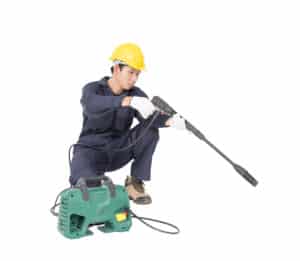What is the Recommended Maintenance Schedule for My Pressure Washer Pump?
Key Takeaways
- Regular maintenance is crucial for the longevity and optimal performance of a pressure washer pump.
- Before each use, perform checks for leaks, fuel and oil levels, air filter cleanliness, and blockages in the spark arrestor and muffler.
- At specific intervals or hours of use, perform additional maintenance tasks such as changing engine oil, inspecting and cleaning the spark plug, replacing the air filter, checking fuel lines, topping up pump oil, cleaning the unloader valve, and checking the water filter.
When it comes to maintaining your pressure washer pump, following a regular maintenance schedule is crucial to ensure its longevity and optimal performance. Regular maintenance not only helps to prevent any unexpected breakdowns but also ensures that your pressure washer operates efficiently. In this article, we will explore the recommended maintenance schedule for your pressure washer pump.
Before Each Use
Before using your pressure washer, it is important to perform some basic checks to ensure that everything is in proper working order. Start by checking for any oil leaks, fuel leaks, or water leaks. If you notice any leaks, address them promptly before using the machine.
Next, check the fuel level to ensure that it is sufficient for your cleaning tasks. Additionally, check the oil level in both the engine and pump. If the oil levels are low, top them up as per the manufacturer’s recommendations.
Inspect and clean the air filter to remove any dirt or debris that may have accumulated. A clogged air filter can affect the performance of your pressure washer, so it’s important to keep it clean.
Finally, check the spark arrestor and muffler for any blockages. Clean them if necessary to maintain proper airflow and prevent any issues with the engine.
After 5 Hours of Use
After approximately 5 hours of use, it is recommended to perform some additional maintenance tasks on your pressure washer pump. Start by changing the engine oil. Over time, the oil can become contaminated, so regular oil changes are essential to keep the engine running smoothly.
Inspect and clean the spark plug to ensure that it is in good condition. A faulty spark plug can lead to poor engine performance or difficulties in starting the pressure washer.
After 25 Hours or Yearly
At the 25-hour mark or on a yearly basis, perform a more thorough maintenance routine. Begin by replacing the air filter. A clean air filter allows for proper air intake and helps to prevent dust and debris from entering the engine.
Check the fuel lines for any signs of wear or damage. Replace any damaged fuel lines to prevent fuel leaks and ensure proper fuel flow.
Inspect the pump oil level and top it up if necessary. The pump oil is essential for the smooth operation of the pump, so regular checks are important.
After 50 Hours or Yearly
After 50 hours of use or on a yearly basis, it is recommended to check and clean the unloader valve. The unloader valve is responsible for regulating the pressure in the pump, and any debris or buildup can affect its functionality.
After 75 Hours or Yearly
Once you reach 75 hours of use or on a yearly basis, check the pressure washer’s water filter. The water filter prevents debris from entering the pump and causing damage. Clean or replace the filter if necessary.
After 200 Hours or Every 2 Years
After 200 hours of use or every 2 years, perform a comprehensive maintenance routine. This includes inspecting and cleaning the pump’s valves and pistons, as well as checking the pump’s seals and O-rings for any signs of wear or damage. Replace any worn-out components to ensure optimal pump performance.
Remember, the frequency of maintenance may vary depending on the usage of your pressure washer. If you use your pressure washer frequently, it is important to follow the recommended maintenance schedule more frequently. However, if you use it less often, you can extend the maintenance intervals as specified by the manufacturer.
Conclusion
Regular maintenance is key to keeping your pressure washer pump in excellent condition. By following the recommended maintenance schedule, you can ensure that your pressure washer operates efficiently and lasts for years to come. Keep in mind that the specific maintenance tasks and intervals may vary depending on the manufacturer and model of your pressure washer, so always refer to the user manual for detailed instructions.
Related Websites:
FAQs:
Q: Why is regular maintenance important for a pressure washer pump?
Regular maintenance ensures the longevity and efficiency of your pressure washer pump. It prevents potential damage and costly repairs, allowing your pressure washer to perform optimally for a longer period of time.
Q: How often should I inspect my pressure washer pump?
It is recommended to inspect your pressure washer pump before each use. This helps you identify any leaks, cracks, loose connections, or issues with the oil level and cleanliness, ensuring proper functioning.
Q: How often should I clean or replace the pump’s inlet filter?
To maintain proper pump functioning, it is important to clean or replace the pump’s inlet filter regularly. The frequency depends on the usage and environmental conditions, but a general guideline is to clean or replace it every 50 hours of use or as recommended by the manufacturer.
Q: What is the importance of flushing the pump system after use?
Flushing the pump system after use is crucial to remove any remaining chemicals or debris that can potentially clog or damage the pump. Follow the provided instructions to ensure a thorough and correct flushing process.
Q: Why should I winterize my pressure washer?
Winterizing your pressure washer is essential to prevent freezing and damage during the colder months. Properly preparing the pressure washer for winter storage will help maintain its longevity and ensure it is ready for use when the season changes.






